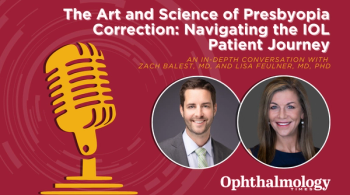
Anat Loewenstein, MD, shares insights on the real-world results of remote retinal imaging
Advanced monitoring strategies are overcoming significant obstacles in retinal care, as highlighted at the 2025 International SPECTRALIS Symposium — And Beyond (ISS).
Anat Loewenstein, MD, co-chaired the retina session and presented in the distributed care session at this year’s Heidelberg 2025 International SPECTRALIS Symposium — And Beyond (ISS), held June 13-14 in Heidelberg, Germany. She is the director of the division of ophthalmology at Tel Aviv Medical Center in Israel.
Prof Loewenstein commented on trends in the contemporary imaging landscape, a key segment of her ISS presentation on home monitoring. “Something that comes up loud and clear is we need to find ways to correlate between function and morphology,” Prof Loewenstein said. “Everyone looks for imaging that will show biomarkers that are predictive of progression.”
Prof Loewenstein said that, along with optical coherence tomography (OCT), advanced technologies like OCT angiography and fluorescence lifetime imaging ophthalmoscopy are quickly changing what is possible in diagnostics. That's good news for patients with age-related macular degeneration, geographic atrophy, and other retinal pathologies. However, she warned that technology alone is not enough to improve and preserve patients’ health outcomes.
“You cannot use remote monitoring as a standalone [tool]. Everyone wants to use AI and remote monitoring, but you need to coordinate with your health system,” she advised. “[Remote monitoring] needs to be supported by the community of retina physicians and of ophthalmologists, so the healthcare system and the payers will be in agreement with the need to use it in our system.”
Newsletter
Don’t miss out—get Ophthalmology Times updates on the latest clinical advancements and expert interviews, straight to your inbox.


















































.png)


